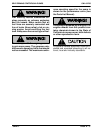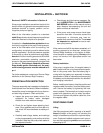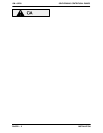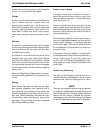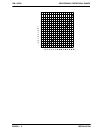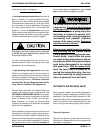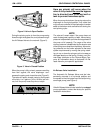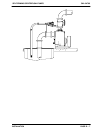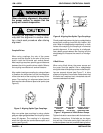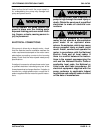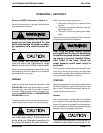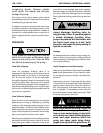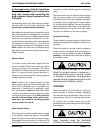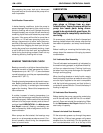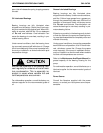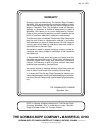
SELF-PRIMING CENTRIFUGAL PUMPSOM--04760
OPERATIONPAGE C -- 2
companying decals. Reverse rotation
could loosen the impeller and seriously
damage the pump.
If the pump is driven by an electric motor, consult
the operating manual furnished with the motor be -
fore attempting to start the motor.
If rotation is incorrect on a three-phase motor,have
a qualified electrician interchange any two of the
three phase wires to change direction. If rotation is
incorrect on a single-phase motor, consult the lit-
erature supplied with the motor for specific instruc-
tions.
OPERATION
Pump speed and operating points must be
within the continuous performance range
shownonthepumpcurve.(SeetheParts
List Manual accompanying the pump.)
Lines With a Bypass
Close the discharge throttling valve (if so
equipped) so that the pump will not have to prime
against the weight of the liquid in the discharge
line. Air from the s uction line will be discharged
through the bypass line back to the wet well during
the priming cycle. When the pump is fully primed
andliquidisflowingsteadilyfromthebypassline,
open the discharge throttling valve. Liquid will then
continue to circulate through the bypass line while
the pump is in operation.
Lines Without a Bypass
Open all valves in the discharge line and start the
power source. Priming is indicated by a positive
reading on the discharge pressure gauge or by a
quieter operation. The pump may not prime imme-
diately because the suction line must first fill with
liquid. If the pump fails to prime within five minutes,
stop it and check the suction line for leaks.
After thepump has been primed, partially close the
discharge line throttling valve in order to fill the line
slowly and guard against excessive shock pres-
sure which could damage pipe ends, gaskets,
sprinkler heads, and any other fixtures connected
to the line. When the discharge line is completely
filled, adjust the throttling valve to the required flow
rate.
Do not operate the pump agai nst a
closed discharg e throttling valve for
long periods of time. If operated against
a closed discharge throttling valv e,
pump components will dete riorate, and
the liquid could come to a b oil, build
pressure, and cause the pump casing to
rupture or explode.
Leakage
No leakage should be visible at pump mating sur-
faces, or at pump connections or fittings. Keep all
line connections and fittings tight to maintain maxi-
mum pump efficiency.
Liquid Temperature And Overheating
Refer to the Specification Data sheet for the maxi-
mum liquid temperature for your specific pump.
Do not apply the pump at a higher operating tem-
perature.
Overheating can occur if operated with the valves
in the suction or discharge lines closed. Operating
against closed valves could bring the liquid to a
boil, build pressure, and cause t he pump to rup-
ture or explode. If overheating occurs, stop the
pump and allow it to cool before servicing it. Refill
the pump casing with cool liquid.
Allow an over-heated pump to com -
pletely cool before servicing
. Do not re-
move plates, covers, gauges, or fittings
from an over-heated pump. Liquid with -
in the pump can reach boiling temp era-
tures, and vapor pressure within the
pump can cause parts being disen-
gaged to be ejected with great force. Af-



